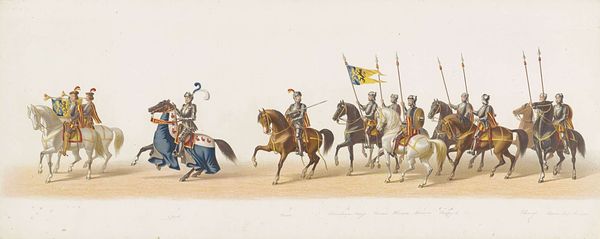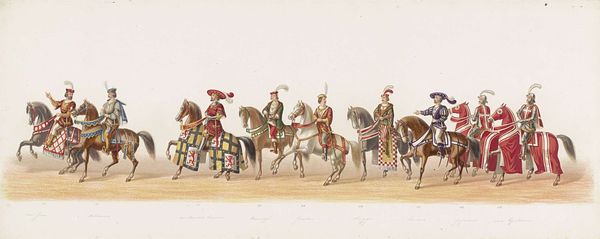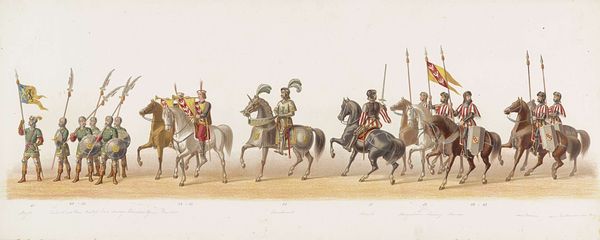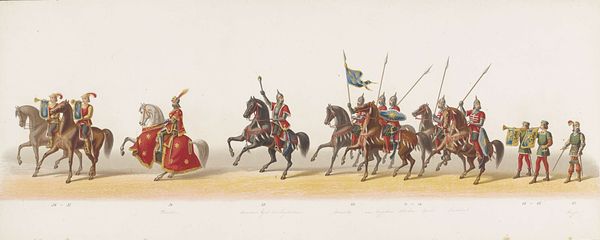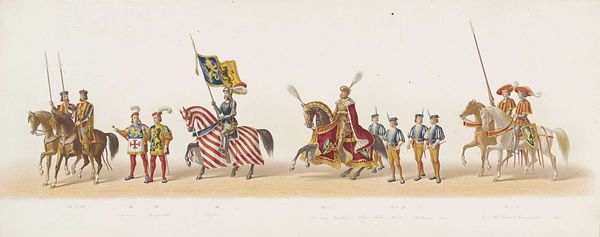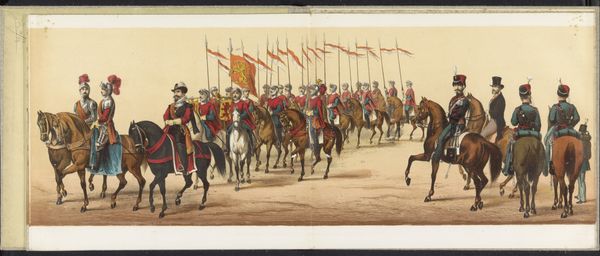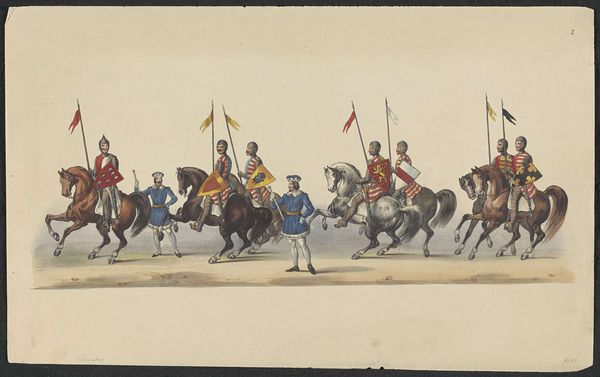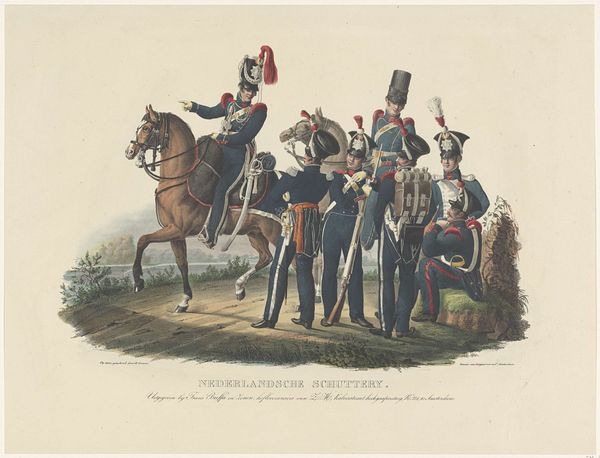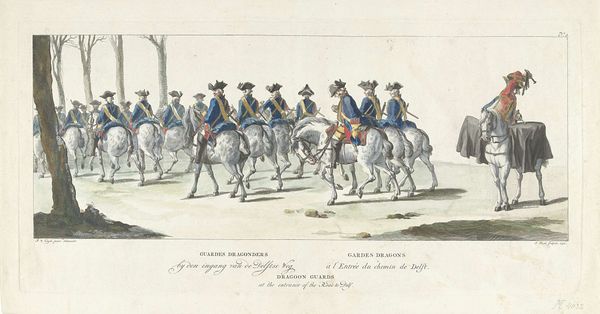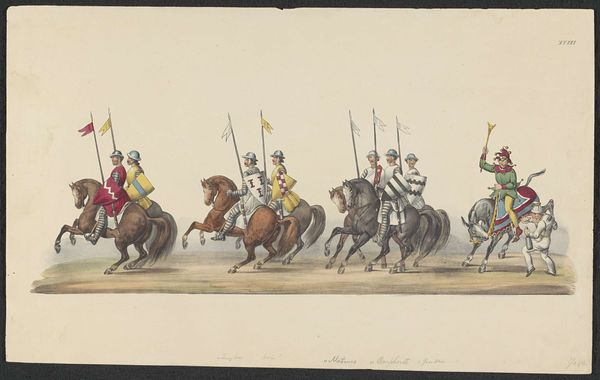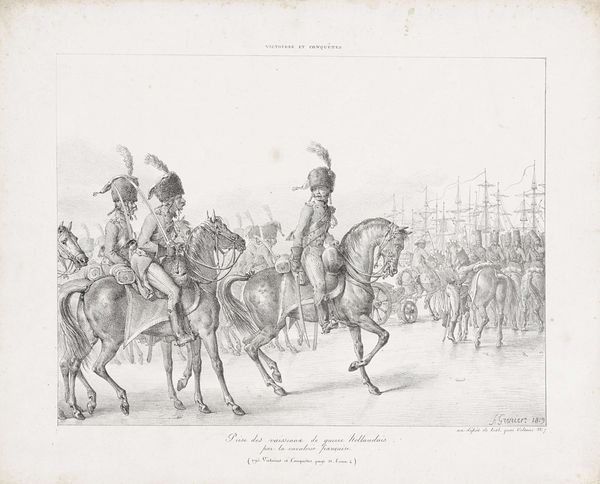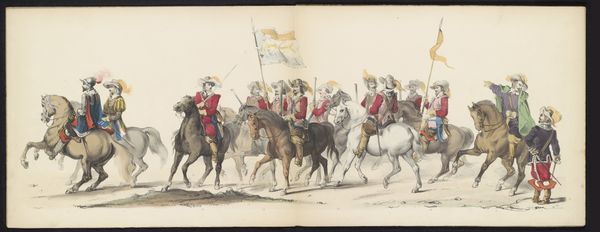
print, watercolor
#
medieval
#
narrative-art
# print
#
figuration
#
11_renaissance
#
watercolor
#
group-portraits
#
watercolour illustration
#
genre-painting
#
history-painting
#
academic-art
#
watercolor
Dimensions: height 290 mm, width 725 mm
Copyright: Rijks Museum: Open Domain
Curator: This watercolour print from 1873 is titled "Delftse optocht van 1873 (tweede plaat)", depicting a procession, purportedly referencing the medieval period. My immediate thought is that the sheer number of figures lends an almost documentary quality, a cataloging of participants or costumes perhaps. Editor: Yes, it definitely speaks to power and spectacle! The work’s aesthetic choices—in mimicking historical styles, the artist crafts a narrative around collective identity, likely referencing the imagined grandeur of Delft's past. I wonder about its original audience and what socio-political messages it was designed to reinforce during its time. Curator: It’s interesting you mention that, as the material choice of watercolour for such a large composition tells a story too. The availability of these printing techniques meant a wider distribution and potentially a more accessible way to consume representations of civic pride and history. How do you perceive the role of labor involved in this work's production? Editor: Precisely, thinking about the material conditions widens the scope! These processions frequently involved artisans, guilds and various societal ranks. The print, in turn, replicates that hierarchy – foregrounding figures with banners and arms and using more muted tones towards the "back". Who had the ability to commission and own prints like this becomes part of the history itself, reflecting both celebration and exclusion. Curator: True. Consider also the artist’s technical approach— the relatively simple linear arrangement suggests a design more about clarity and recognition than illusionistic depth. I suspect this points to the requirements of mass production and a need to convey information effectively to a broader viewership. Editor: And within that very technical approach, there are decisions being made about how to represent status, class and possibly even gender within the procession, shaping our understanding of historical events. Do you find that the work contributes towards national identity making, by representing historical Delft in that manner? Curator: Perhaps, but from a material perspective, what I find more compelling is the intersection of craft and industry. The creation and circulation of these prints highlights the evolving means by which art becomes integrated into everyday life and its social rituals. Editor: It truly prompts contemplation on representation, privilege, and historical construction. I leave intrigued by the social narratives that shaped the artwork itself, the figures depicted, and the communities it may have served to solidify.
Comments
No comments
Be the first to comment and join the conversation on the ultimate creative platform.
